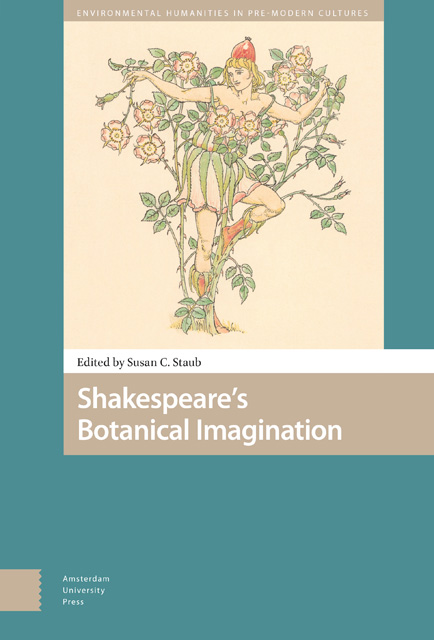4 - Shakespeare’s Botanical Grace
Published online by Cambridge University Press: 17 October 2023
Summary
Abstract
Treating Shakespeare’s and Ovid’s literary representations of botanical transformations, with attention to Shakespeare’s distinguishing plaguetime context, I examine several examples of Shakespeare’s representation of failed and successful botanical transformations, with focus on Ophelia’s, which closes this paper. Hers is one that Shakespeare attends to with extra care in each of its aspects, complexly detailing its pre-conditions, material manifestation, witness-reporting, and after-effects. Alone among others represented by premodern writers, Ophelia’s transformation is better considered as a botanical tribute and triumph and, more powerfully still, as a gift of “botanical grace” that has continued to signify over centuries.
Keywords: burial, plague, oppression, Ovid, memorialization, gift
The transformation of humans into botanical subjects occurs with some frequency in Ovid’s Metamorphoses, one of Shakespeare’s most-utilized source texts. The best known of these botanical transformations are of Daphne into a laurel as she is chased by Apollo; Narcissus into a flower, having wasted away while self-gazing; and Adonis, whose blood Venus infuses with nectar to produce a flower to cherish in his place. These relatively short stories involve tragic combinations of love and/or danger, and they end when the beloved becomes forever a botanical subject upon the loss of his or her human form. Peter Travis explains the permanence of these transformations:
…Ovid’s narrative takes the absolute equals sign of metaphor (Clytie is a flower) and explores the graduated process of selection involved in metaphoric translation: the dissimilar features between girl and flower are suppressed; their analogous features are made more nearly identical, even though (and very importantly) at translation’s end traces of the girl’s physical and emotional identity remain firmly intact.
Conveying closure and resembling what archaeologists call “botanical tributes,” Ovid’s botanical transformations do more than relate a fascinating tale of metamorphosis and explanation for the power of the particular plant or tree (e.g., the laurel). They signal for readers, then as now, the importance for humans of funeral rituals and of the optics of botanical flourishing.
- Type
- Chapter
- Information
- Shakespeare's Botanical Imagination , pp. 105 - 126Publisher: Amsterdam University PressPrint publication year: 2023



